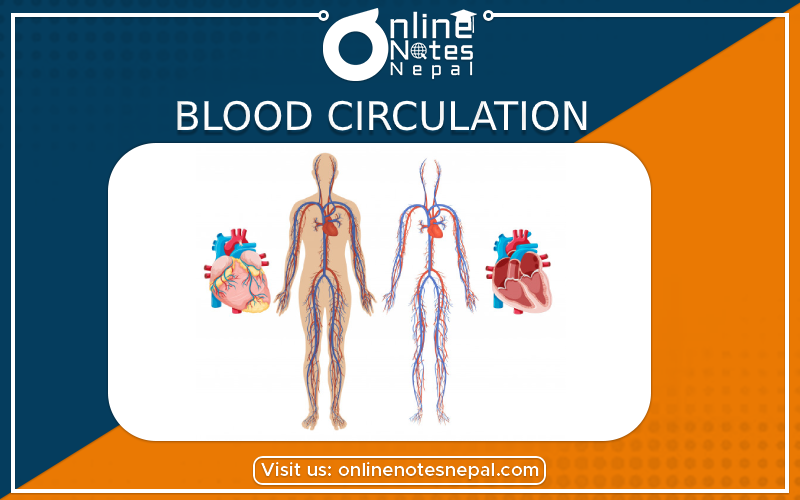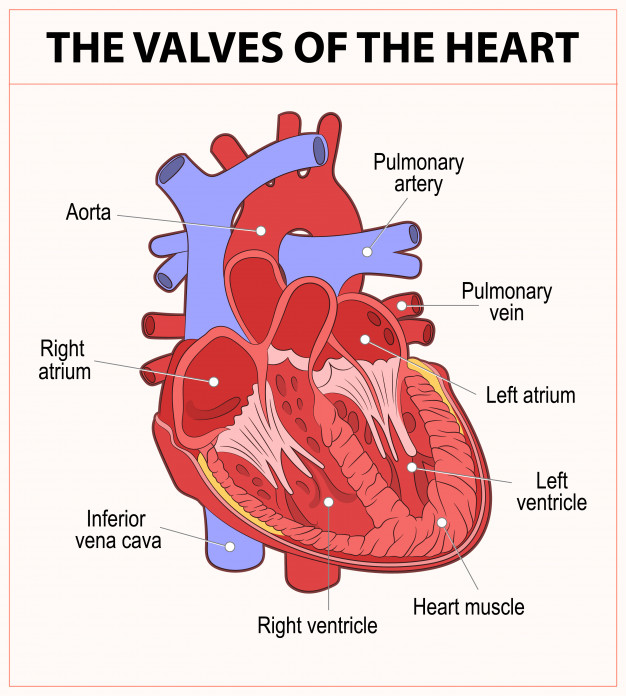Published by: Nuru
Published date: 06 Jul 2021

The deoxygenated blood from all parts of the body is collected in the right auricle through the superior and inferior vena cava. When the right auricle is filled with blood, the tricuspid valve opens and the blood collects in the right ventricle. From the right ventricle pulmonary artery starts which carries the impure blood to the lungs. In the lungs, the deoxygenated blood leaves carbon dioxide and absorbs oxygen. Hence, the blood is purified. Then, the oxygenated blood is carried to the left auricle through a pulmonary vein. When the left auricle is filled with blood, the bicuspid valve opens and the blood collects in the left ventricle, aorta starts through which the oxygenated blood is transported to all the parts of the body. The blood leaves oxygen in the body and collects carbon dioxide. This impure blood is again collected in the right auricle through superior and inferior vena cava. This process of blood circulation occurs continuously.

There are two types of blood circulation, they are:
There are three types of blood vessels, they are:
The blood vessels which carry blood from the heart to the different parts of the body are called arteries.
All the arteries except the pulmonary artery carry pure blood. They don't have a valve in them. Arteries have thick walls.
Blood flows at high speed in the artery. Due to which there is no chance of blood flowing in a backward direction. As a result, there is no valve in the artery. And since the blood flows in high pressure in arteries, to withstand such high pressure, they are made up of thick walls.
The blood vessel which carries blood from the different parts of the body to the heart is known as a vein.
All the veins except the pulmonary vein carry impure blood. Veins are made up of thin walls due to their low blood pressure.
Veins have a valve in them as blood flows with low speed in veins. Due to this, there is a high chance of the flow of blood in a backward direction. In order to prevent this, they have thin walls.
A thin network that connects arterioles and venules is called capillaries. They allow the exchange of nutrients and gases by defusion between the blood and the blood cells.
The process exerted by the blood on the wall of the blood vessels is known as blood pressure.
There are two types of blood pressure, they are:
The pressure exerted by the blood on the wall of the blood vessel during the contraction of the heart is known as systolic blood pressure.
It ranges from 90 mmHg to 130 mmHg or on average 120 mmHg in an adult healthy person. It is known as the upper limit of arterial blood pressure.
The pressure exerted by the blood on the wall of the blood vessel during the relaxation of the heart is known as diastolic blood pressure.
It ranges from 60 mmHg to 90 mmHg or on average 70 mmHg in an adult healthy person. It is known as the lower limit of arterial blood pressure.
The periodic contraction and the relaxation of the heart are known as a heartbeat.
It ranges from 60 to 120 times per minute in an adult healthy person. The rate of heartbeat increases during fear, tension, fever, exercise, etc.
The instrument used to measure blood pressure is called a sphygmomanometer.
It is the process of purifying blood by leaving carbon dioxide and absorbing oxygen.